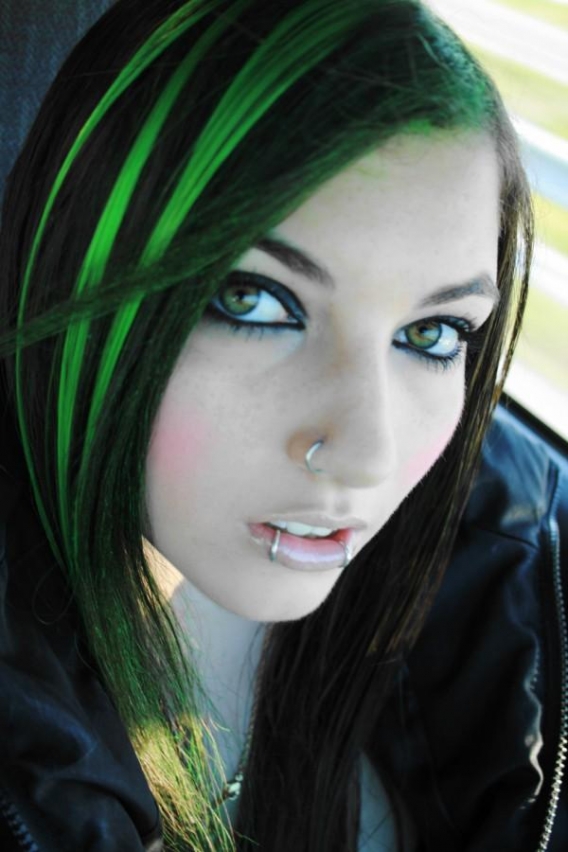Emo hair has become a powerful symbol of identity and self-expression, particularly among the youth. This unique hairstyle is not just a trend but a statement that resonates with many who feel misunderstood or different. The emo subculture, which began in the 1980s, has evolved over the years, with emo hair at the forefront of its aesthetic. Characterized by bold colors, dramatic cuts, and a sense of rebellion, emo hair reflects the emotions and individuality of those who wear it.
In its essence, emo hair is about breaking away from conventional norms and embracing one's true self. With a blend of punk and goth influences, this hairstyle often features long bangs, choppy layers, and vibrant hues that can range from jet black to electric blue. Emo hair is not merely about appearance; it embodies a deeper connection to music, art, and personal experiences that shape one's identity.
As we delve deeper into the world of emo hair, we'll explore its significance, styling tips, and even some notable figures who have embraced this iconic look. Whether you're considering a transformation or simply curious about this subculture, understanding emo hair can provide valuable insight into a unique form of cultural expression.
What is Emo Hair?
Emo hair is defined by its distinctive style, often characterized by:
- Long, side-swept bangs
- Choppy layers
- Bright, unconventional colors
- Oftentimes, asymmetrical cuts
This hairstyle is often associated with the emo music genre, which emphasizes emotional expression and introspection. Emo hair serves as a canvas for individuals to showcase their personality and feelings, often becoming a significant part of their identity.
Who Popularized Emo Hair?
The emo subculture has seen various influencers throughout the years, but some key figures have made significant contributions to the popularity of emo hair. Among them are musicians, actors, and social media personalities who have embraced the style. Notable examples include:
- Gerard Way (My Chemical Romance)
- Hayley Williams (Paramore)
- Brendon Urie (Panic! At The Disco)
These artists not only have their unique takes on emo hair but have also helped to define the emo aesthetic through their music and fashion choices.
What Are the Different Emo Hair Styles?
Emo hair isn't limited to a single style; instead, it offers a variety of looks that individuals can customize to reflect their personal taste. Here are some popular emo hair styles:
- Classic Emo Cut: Long bangs that cover one eye, with layered ends.
- Asymmetrical Bob: Short on one side and longer on the other, often with vibrant colors.
- Scene Hair: A more exaggerated version of emo hair with extreme volume and bright colors.
- Undercut: Short sides with longer hair on top, allowing for versatile styling.
Each of these styles enables individuals to express themselves creatively while staying true to the emo aesthetic.
How to Maintain Emo Hair?
Maintaining emo hair requires some effort to keep it looking vibrant and stylish. Here are some essential tips for upkeep:
- Regular trims to maintain shape and prevent split ends.
- Use color-safe shampoos and conditioners to preserve color.
- Incorporate deep conditioning treatments for moisture.
- Limit heat styling to prevent damage.
By following these tips, individuals can ensure their emo hair remains fresh and expressive.
What Colors Are Popular for Emo Hair?
The color palette for emo hair is often bold and expressive. Some popular colors include:
- Jet Black
- Bright Red
- Electric Blue
- Vivid Purple
- Pastel Shades
These colors allow individuals to convey their emotions and set themselves apart from conventional hairstyles.
Is Emo Hair Suitable for Everyone?
While emo hair can be a fantastic form of self-expression, it might not be suitable for everyone. Factors to consider include:
- Hair type and texture
- Personal style and aesthetic
- Professional environment and societal norms
Ultimately, the decision to adopt emo hair should be based on individual comfort and preference.
What Are the Common Misconceptions About Emo Hair?
There are several misconceptions surrounding emo hair that can lead to misunderstandings about the subculture:
- It's just a phase: Many people see emo hair as a temporary trend, but for many, it represents a deeper identity.
- It's only for teenagers: While popular among youth, people of all ages can embrace emo hair.
- It's solely about sadness: Emo culture encompasses a range of emotions, not just sadness.
Understanding these misconceptions can foster a more accurate perspective on emo hair and its cultural significance.
Celebrity Spotlight: Hayley Williams and Her Emo Hair Evolution
One of the most influential figures in the emo scene is Hayley Williams, the lead singer of Paramore. Her hair has evolved over the years, showcasing various emo styles that have inspired countless fans. Below is a brief biography along with personal details about her hair journey:
| Detail | Information |
|---|---|
| Name | Hayley Nichole Williams |
| Birth Date | December 27, 1988 |
| Career | Musician, Singer, Songwriter |
| Notable Hair Colors | Orange, Blonde, Pink |
| Influence | Style Icon for Emo and Alternative Culture |
Williams has experimented with various colors and styles, making her a trendsetter in the emo hair scene. Her bold choices reflect her personality and artistic vision, inspiring many to embrace their unique styles.
In conclusion, emo hair is more than just a hairstyle; it is a form of self-expression that has become synonymous with a vibrant subculture. From its origins to its various styles and maintenance tips, emo hair continues to evolve and inspire individuals to embrace their true selves. Whether you are an emo veteran or just curious about the style, there is always something new to discover in the world of emo hair.
Unveiling The Mysteries Of Hazbin Hotel Season 2
The Life And Influence Of Margaret Qualley's Dad
Discover The World Of My Hero Academia: A Journey Through Heroism

.jpg)
